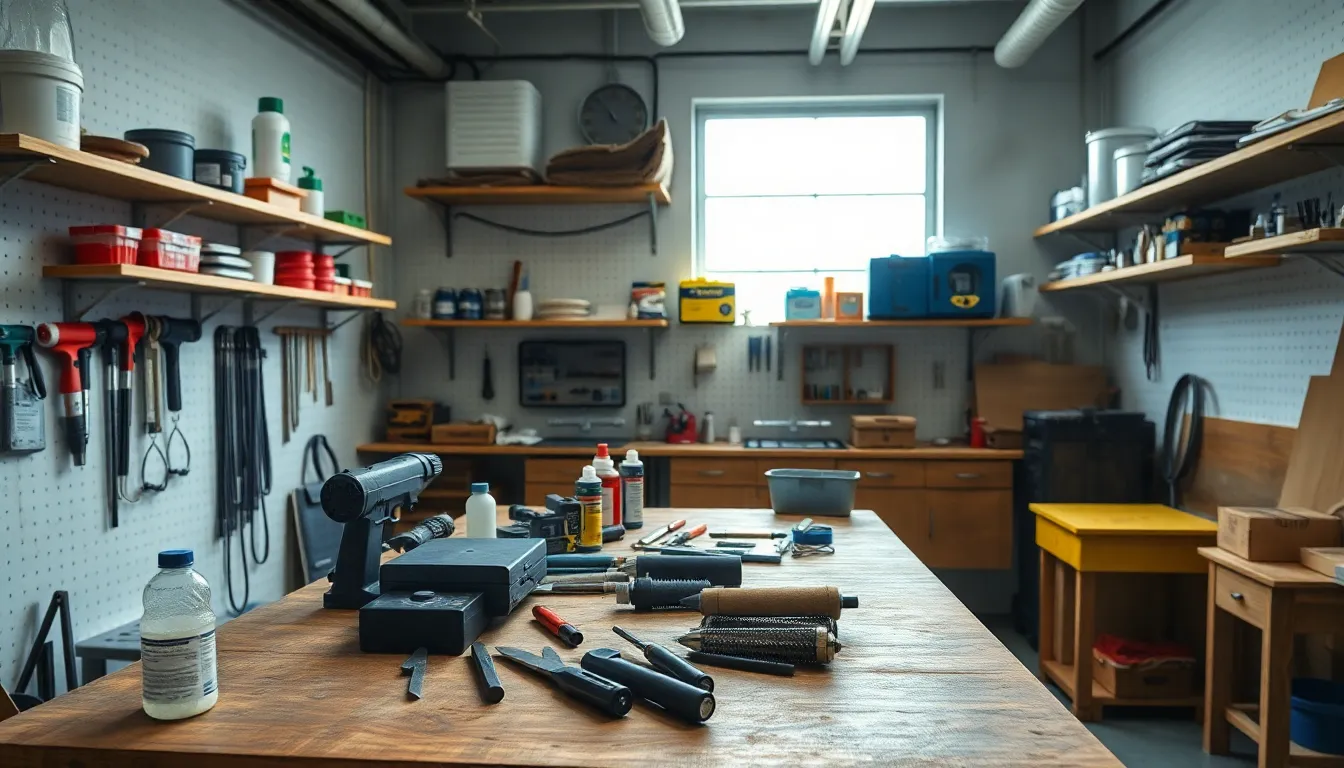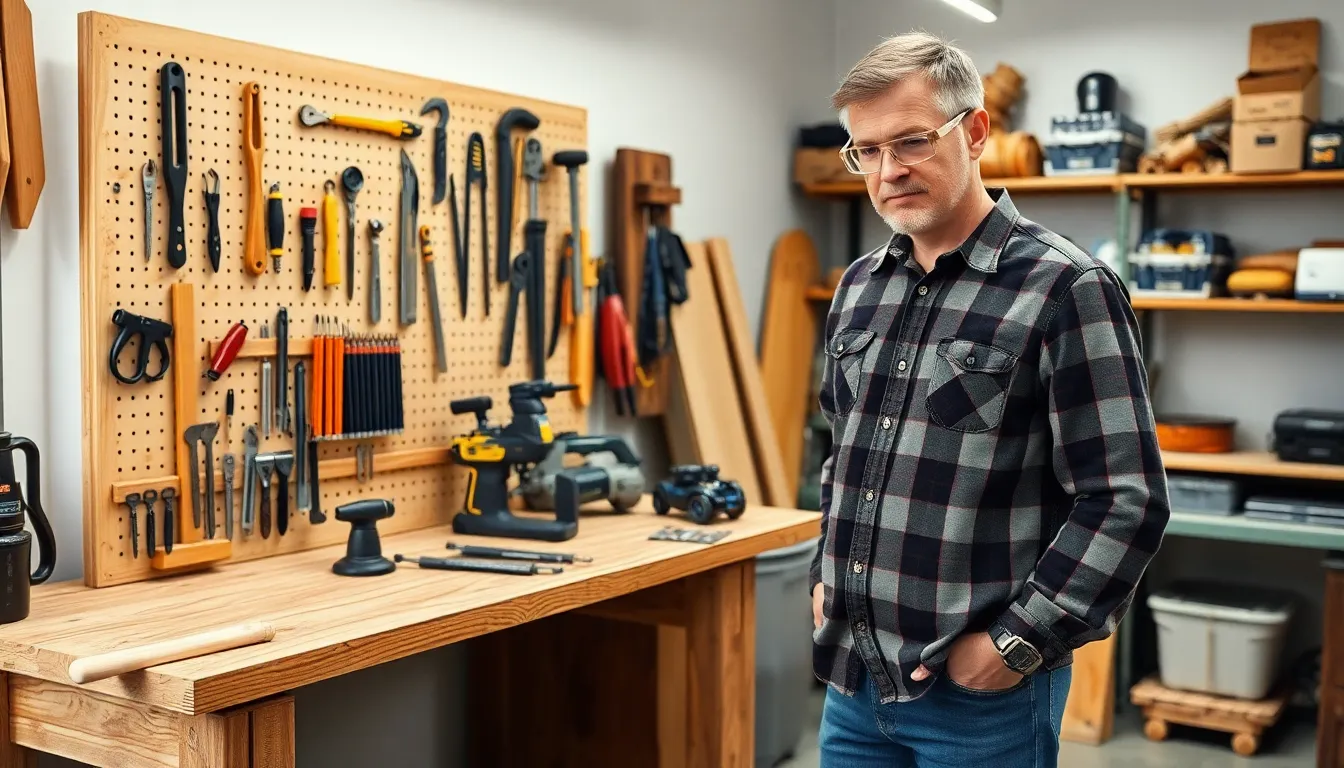Table of Contents
ToggleIn the world of DIY and craftsmanship, a workshop is more than just a space; it’s a sanctuary for creativity and productivity. However, maintaining the durability of this essential area can often be overlooked. By implementing a few simple yet effective tips, anyone can enhance the longevity of their workshop, ensuring it remains a reliable hub for projects.
From choosing the right materials to organizing tools efficiently, these strategies not only improve the workspace but also elevate the overall crafting experience. Embracing these durability tips can save time and money while fostering a more enjoyable and efficient environment for makers of all skill levels. Let’s dive into practical ways to fortify that workshop and keep the creativity flowing.
Importance Of Workshop Durability Tips
Workshop durability tips serve critical roles in maintaining an efficient and effective workspace. Understanding these tips enables makers to create an environment that withstands the rigors of regular use. Users gain several key benefits by prioritizing durability.
- Increased Longevity: Durable materials extend the life of tools and work surfaces. This reduces the frequency of replacements, making it economical over time.
- Enhanced Safety: A well-maintained workshop minimizes hazards. Securely organized tools and sturdy equipment reduce accidents, ensuring a safer workspace.
- Improved Productivity: An organized and durable workshop fosters focus. When tools are easy to access and surfaces are reliable, creativity flows more freely.
- Cost Savings: Investing in durable materials and equipment yields long-term savings. Avoiding frequent repair costs and replacement expenses allows for reallocation of funds to new projects.
- Elevated Quality of Work: A stable and reliable environment enhances the quality of craftsmanship. Durability ensures that the workspace remains functional, leading to better project outcomes.
- Sustainability: Using durable materials contributes to environmentally friendly practices. Reducing waste through longevity aligns with sustainable workshop principles, promoting responsible crafting.
By integrating these workshop durability tips, makers enhance their creative spaces. Following these strategies ensures improved satisfaction and efficiency in various DIY and craftsmanship endeavors.
Common Challenges In Workshop Durability

Workshop owners face several challenges that can impact durability. Understanding these issues helps create effective strategies for maintaining a long-lasting workspace.
Environmental Factors
Environmental factors significantly affect workshop durability. Humidity levels can lead to moisture damage on tools and surfaces, while temperature fluctuations can cause materials to expand or contract. To combat these issues, consider installing climate control systems to stabilize temperature and humidity. Regular inspections of the workspace for signs of water damage or rust can also prevent long-term problems. Additionally, using moisture-resistant materials for shelves and floors ensures longevity.
Tool Wear and Tear
Tool wear and tear presents a consistent challenge in maintaining workshop durability. Frequent use leads to dull blades, worn grips, and damaged components. To prolong the life of tools, adopt a regular maintenance schedule that includes cleaning, sharpening, and lubricating. Investing in high-quality tools designed for durability reduces the frequency of replacements. Moreover, organizing tools properly helps avoid unnecessary damage—storing items in dedicated cases or racks protects them from accidental impacts.
Essential Workshop Durability Tips
Implementing essential workshop durability tips can significantly extend the lifespan of tools and maintain an efficient workspace. Effective organization and regular maintenance practices play crucial roles in achieving this goal.
Organizing and Storing Tools
Organizing and storing tools properly prevents damage and enhances accessibility.
- Use labeled storage: Label drawers and bins for easier identification of tools.
- Opt for modular shelving: Choose adjustable shelving units that adapt to changing storage needs.
- Employ tool chests: Incorporate heavy-duty tool chests to protect against dust and moisture.
- Install pegboards: Utilize pegboards for vertical storage, maximizing floor space.
- Store similar items together: Group tools by function to streamline locating them during projects.
Effective organization not only preserves tools but also creates a more productive workspace.
Regular Maintenance Practices
Regular maintenance practices ensure tools function optimally and last longer.
- Inspect tools frequently: Check for signs of wear, rust, or damage at regular intervals.
- Clean tools after use: Wipe down tools to remove residue and prevent corrosion.
- Sharpen blades regularly: Keep cutting tools sharp for efficiency and safety.
- Lubricate moving parts: Apply appropriate lubricants to reduce friction and prolong tool life.
- Follow manufacturer guidelines: Adhere to specific maintenance recommendations for each tool.
Consistent maintenance practices not only boost tool durability but also enhance overall workspace safety and productivity.
Investing In Quality Materials
Investing in quality materials enhances the durability and efficiency of any workshop. Selecting sturdy, reliable materials ensures that tools and surfaces withstand wear and tear. Here are key considerations for maximizing durability:
- Wood Types: Choose hardwoods like oak or maple for workbenches, as these resist dents and scratches. Softwoods, although cheaper, may wear down quickly.
- Fasteners and Hardware: Utilize rust-resistant screws, bolts, and hinges to prevent corrosion, especially in humid environments. Stainless steel and galvanized components offer longer-lasting performance.
- Finishes and Coatings: Apply high-quality varnishes and sealants to protect surfaces from moisture and wear. Look for products designed for industrial use that provide better protection.
- Protective Gear: Invest in durable protective equipment, such as gloves and goggles, to ensure personal safety while working. Materials like Kevlar or carbon-fiber composites offer increased protection.
- Tool Quality: Opt for professional-grade tools over cheaper alternatives. Tools made from high-carbon steel or titanium provide superior strength and longevity.
Investing in these quality materials not only prolongs the life of a workshop but also enhances safety and performance, contributing to an optimal crafting experience.
Embracing workshop durability tips not only enhances the workspace but also transforms the crafting experience. By prioritizing quality materials and effective organization, makers can create a safer and more efficient environment. Regular maintenance and thoughtful planning lead to long-lasting tools and surfaces that withstand the test of time.
Investing in durability means fewer repairs and replacements, ultimately saving money and reducing waste. A well-maintained workshop fosters creativity and productivity, making it a space where innovative ideas can thrive. With these strategies in place, anyone can enjoy a more satisfying and successful DIY journey.





